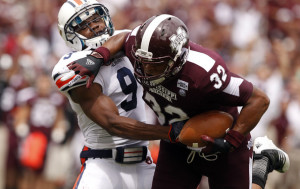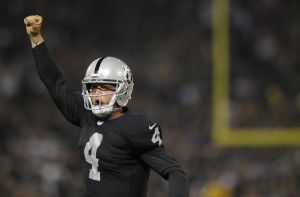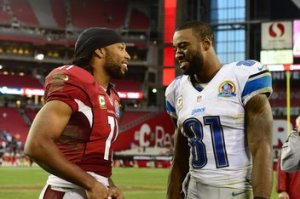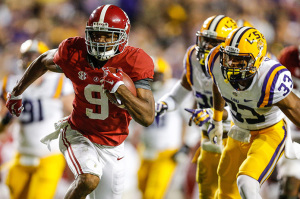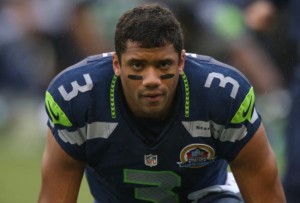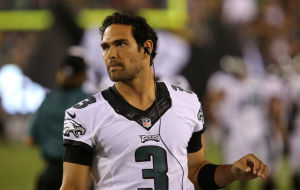The Pac-12 South now has 5 teams in the top 20 of the college football playoff rankings: UCLA at #9, Arizona State at 13, Arizona at 15, Utah at 17, and USC at 19. All five teams also appear in the top 25 of the AP Poll, with 2-8 Colorado being the only Pac-12 South team left out in the cold. Meanwhile, the SEC West has lost some of its luster after a disastrous week 11: only four of seven SEC West teams are in either sets of rankings, with LSU, Texas A&M, and Arkansas now unranked.
Simple math tells us that placing 5 out of 6 teams in the top 25 is more impressive than 4 out of 7; on the other hand, 25 is a pretty arbitrary cut-off point. Three SEC West teams appear in the top 8 of the playoff rankings, compared to zero Pac-12 teams. The same is true of the AP Poll, where Alabama, Mississippi State, and Ole Miss are all ahead of #11 UCLA, the highest-ranked Pac-12 South squad. If you were to combine the two divisions, the rankings would look something like this:
- SEC West (Alabama)
- SEC West (MSU)
- SEC West (Ole Miss)
- P-12 South (UCLA)
- P-12 South (Arizona State)
- P-12 South (Arizona)
- SEC West (Auburn)
- P-12 South (Utah)
- P-12 South (USC)
- SEC West (LSU)
- SEC West (Texas A&M)
- SEC West (Arkansas)
- P-12 South (Colorado)
From that vantage point, the Pac-12 South doesn’t look so hot: the #1 team in the SECW is ahead of the #1 team in the P-12S, the #2 is ahead of #2, #3 is ahead of #3, #4 is ahead of #4, and the 6th and 7th best teams are ahead of the 6th best team. The only advantage the Pac-12 South has, perhaps, is that it’s 5th best team — USC — has a slightly better resume than that of the 5th best team — LSU — in the SEC West.
But all of the above is based solely on the rankings. When you look deeper at each team’s season, the differences become more stark.
For starters, Colorado is a terrible team, while the SEC West boasts no bad teams. Arkansas is 5-5, courtesy of a 1-4 record in the SEC West and a loss to Georgia; on the other hand, the Razorbacks also blew out Alabama-Birmingham, Texas Tech, and Northern Illinois, three teams that are very comparable to Colorado. Against Alabama, Georgia, and Mississippi State — three top ten teams — the Hogs are 0-3 but with an average margin of defeat of just 7 points.
If we want to just look at the quality teams in each division, then, we are looking at 5 teams in the Pac-12 South and 7 in the SEC West. It’s probably unfair to do such a comparison to the SEC West, but let’s do it anyway.
Head to Head
Let this be a good reminder of how frustrating college football analysis can be: not only have there been zero games this year between the SEC West and the Pac-12 South, but there have been no interconference games at all between the SEC and the Pac-12. In fact, there’s only one team in the country that’s even played a team from both divisions: Memphis, which lost 24-3 in Oxford and 42-35 at the Rose Bowl.
Losses
The seven SEC West teams have just three losses in non-division play this year, which is three times as many as it had week ago. Those three loses were by Arkansas and Auburn to a very good Georgia team, and by Texas A&M to a pretty good Missouri squad.
The five Pac-12 teams have five interdivision losses: UCLA and Utah both lost to an excellent Oregon team, which is pretty understandable. From there, though, the wheels fall off the track pretty quickly: USC lost to 6-4 Boston College, Arizona State lost to a 4-6 Oregon State, and Utah lost at home to a 3-7 Washington State team. The Utes led 21-0 in that game and 27-14 in the 4th quarter, but wound up losing 28-27 in one of the more inexplicable losses of the year.
Judged solely by losses, the SEC West is the far superior division. The biggest wart is probably Auburn’s blow out loss against UGA, but Utah also lost by 24 at home to Oregon, so the Pac-12 South can’t say it has avoided blow outs, either.
Wins
The most impressive non-division win from either set of schools this year probably belongs to the Pac-12: Arizona’s 7-point win in Eugene over the Ducks. After that, though, one could argue that the next seven best wins came from the SEC West.
Close calls aside, there’s nothing to criticize about when it comes to wins on the road against Kansas State (Auburn) or on a neutral field against Wisconsin (LSU). Those two teams a combined 15-2 in all other games. A neutral site victory against 6-5 West Virginia (Alabama) counts for something, too. Tennessee and Florida are both inconsistent SEC East teams, but (1) the SRS has both teams in the top 25, and (2) both teams are in the top 30 of Sagarin’s pure predictor ratings. The Football Outsiders ratings have both squads slightly lower, but in any event, SEC West teams have registered a 4-0 record against those two teams.
What about the Pac-12? After Oregon, the next best win is either: (1) any of the wins by ASU, Southern Cal, or Utah against Stanford, (2) Arizona State against Notre Dame, or (3) UCLA against Texas. Those are all solid wins, but those five are pretty comparable to the five against West Virginia, Tennessee, and Florida.
Conclusion
The Pac-12 South now has five top 25 teams, but the number 25 is a pretty arbitrary bench mark. The SEC West, despite having an additional team, is stronger top to bottom. The SEC West has entirely avoided losses to bad teams, something the Pac-12 South can’t quite represent. And when it comes to non-division wins, it’s a close call, but the SEC West probably has the better case to be made. The Pac-12 South remains a great division, but it’s clear that even after a rough week 11, the SEC West is still the top division in college football.




